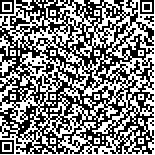| 摘要: |
| 通过自制小型循环水系统养殖实验, 研究不同投喂频率对珍珠龙胆石斑鱼(♀Epinephelus fuscoguttatus×♂Epinephelus lanceolatus)幼鱼(35.50 g±4.58 g)生长及系统水质指标的影响。实验设1、2和4 次/d 3个投喂频率实验组, 每组3个重复。水温控制在25℃±2℃, 每15 d取样测鱼体质量, 每天取水样测定水质指标, 实验周期为45 d。结果表明: 不同投喂频率条件下, 珍珠龙胆石斑鱼幼鱼的增质量率、饲料转化率差异显著(P<0.05); 随着投喂频率的增加, 增质量率呈现显著升高趋势, 饲料转化率呈现先显著升高后又显著降低趋势; 特定生长率也呈上升趋势, 2次/d和4次/d 组显著高于1次/d组(P<0.05), 2次/d和4次/d组之间差异不显著(P>0.05); 随着养殖时间的延长, 增质量率、饵料转化率和特定生长率都呈现显著降低趋势(P<0.05)。在0~15 d, 4次/d组增质量率最高, 其值为46.30%, 分别是1次/d和2次/d组的1.31倍和1.11倍, 2次/d组的饲料转化率最高, 其值为158.95%, 分别是1次/d和4次/d组的1.30倍和1.13倍, 氨氮、亚硝酸盐含量和pH变化差异不显著(P>0.05)。同时氨氮随投喂频率增加而升高, 而pH随投喂频率增加而降低。综合认为, 在循环水养殖模式下, 珍珠龙胆石斑鱼幼鱼适宜投喂频率为2次/d。 |
| 关键词: 珍珠龙胆石斑鱼(♀Epinephelus fuscoguttatus×♂Epinephelus lanceolatus) 投喂频率 生长 水质 |
| DOI:10.11759/hykx 20161118001 |
| 分类号: |
| 基金项目:国家海洋局2013 年海洋经济创新区域示范项目(F01521145300);浙江省科技计划项目(2017C32015) |
|
| Effects of different feeding frequencies on the growth of juvenile ♀Epinephelus fuscoguttatus×♂Epinephelus lanceolatus and on water quality index |
|
ZHU Xiao-fang,CAO Xiao,GONG Jian-hua,XU Shan-liang,GUO Chun-yang
|
| Abstract: |
| Effects of different feeding frequencies on the growth of juvenile pearl gentian grouper (♀Epinephelus fuscoguttatus×♂Epinephelus lanceolatus) (35.5 g ± 4.58 g) and on water quality index were studied in a breeding experiment using a self-made small-scale circulating water system. Fishes were divided into three groups with three replicates in each group; groups were fed 1, 2 and 4 times per day. Body weight of the fishes was measured every 15 days, and water quality index was measured every day. The experimental period was 45 days and water temperature was 25°C ± 2°C. Results showed that weight gain and feeding conversion rates of juvenile fishes were significantly different under different feeding frequencies (P < 0.05). As feeding frequency increases, weight gain rate significantly increased (P < 0.05), and feed conversion rate showed a significant initial increase and then a decrease (P < 0.05). Specific growth rate showed increased, and the growth rate of the groups that were fed two and four times per day was significantly higher than that of the group that was fed once a day group, whereas there was no significant difference between the groups that were fed two and four times per day (P > 0.05). With the increased feeding time, weight gain, feeding conversion, and specific growth rates significantly decreased (P < 0.05). In the first 15 days, weight gain rate in the group that was fed four times per day was the highest with a value of 46.30%, which was 1.31 and 1.11 times higher than those of the groups that were fed once and two times per day, respectively. The feeding conversion rate was the highest in the group that was fed two times per day with a value of 158.95%, which was 1.30 and 1.13 times higher than those of the groups fed once and four times per day, respectively. There were no significant differences in the contents of ammonia and nitrite and the variation of pH value (P > 0.05). Meanwhile, nitrate content increased, whereas pH value decreased with increased feeding frequency. Results of the present study suggest that the optimal feeding frequency of pearl spotted grouper juvenile fish was two times per day under the recirculating aquaculture system. |
| Key words: ♀Epinephelus fuscoguttatus×♂Epinephelus lanceolatus feeding frequency growth water quality index |
